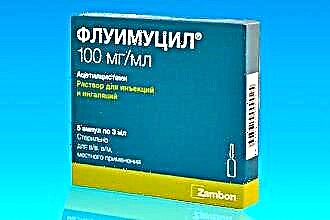Why can a ruptured heart occur?
The main causes of heart rupture are:
- Dissection of the ascending aorta;
- An abscess caused by infective endocarditis;
- Disintegration of tuberculoma;
- Echinococcal cyst;
- Sarcoidosis;
- Heart trauma;
- Acute myocardial infarction;
The causes of rupture of the aortic root of the heart are often associated with syphilitic lesions and advanced atherosclerosis, as well as the tumor process of the esophagus.
Heart trauma can be blunt and penetrating. It can also be iatrogenic, that is, caused by medical interventions that can rupture the myocardium, for example:
- Diagnostic catheterization, including transseptal puncture and endocardial biopsy.
- Balloon plastic valves.
- Transcatheter aortic valve implantation.
- Pericardiocentesis.
- Installation of a temporary or permanent pacemaker.
- Mitral valve repair.
Acute MI with extensive involvement or conditions may be complicated by MS.
Factors that increase the risk of heart rupture after myocardial infarction are as follows:
- Female
- Age over 60-65 years old
- Arterial hypertension
- Postinfarction ischemia
- Late initiation of thrombolytic therapy
It is believed that the heart can burst from fear, for example, when a firecracker explodes or when a dog attacks, however, such cases are extremely rare.
The main clinical manifestations of the condition and its diagnosis
Rupture of the left ventricle of the heart with penetrating trauma, aneurysm, rupture of the aorta of the heart most often occur acutely, suddenly for the patient and are manifested by the following symptoms:
- Intense chest pain that does not go away with nitroglycerin and analgesics;
- Loss of consciousness;
- Swelling of the jugular veins;
- Cyanosis of the skin;
- Dyspnea.
Such symptoms and extinction of vital functions last about several minutes, after which cardiac arrest and death occurs.
With myocardial infarction, blunt trauma, disintegration of an abscess or tuberculoma, if the defect is not large and is localized only in the thickness of the muscle without the involvement of the heart bag, the symptoms increase a little more slowly. Blood flows into the pericardial cavity, cardiac tamponade occurs, which is the cause of cardiac arrest.
What a ruptured heart looks like at autopsy is shown in the photo below:
At this time, chest pains become more intense, the patient is agitated and anxious, he has swelling of the extremities, fear of death, cyanosis of the skin and shortness of breath, turning into respiratory arrest.
With a slowly progressive rupture, it is possible to carry out instrumental diagnostics: echocardiography, chest x-ray and electrocardiography.
Providing emergency care to the patient
Treatment of a ruptured heart requires emergency surgery and intensive care at the prehospital and postoperative stages.
At the moment, the following operational techniques are available:
- Open heart gap repair;
Installation of an occluder with a catheter;
- Prosthetics of valves and vessels (aorta) with donor, animal or artificial materials;
- Heart transplant;
- Puncture of the pericardium in order to eliminate cardiac tamponade;
- Coronary artery bypass grafting after the main operation.
Drug treatment is carried out in the conditions of the intensive care unit in order to maintain vital functions in the recovery period. If a patient is delivered to cardiac surgery in a timely and stable condition, his chances of survival increase rapidly.
Often, patients are shown transfusion of erythrocyte mass, plasma, albumins, saline solutions to correct the volume of circulating blood and eliminate hypoxia. Blood pressure is monitored, since both hyper- and hypotension can cause a recurrent rupture of the aorta of the heart and damage vital organs, negating the efforts of surgeons.
Forecast and further observation of the patient
The prognosis depends on the type, size, cause of the rupture and hemodynamic disorders that have arisen after the formation of the defect. MS accounts for about 15% of hospital deaths in patients with acute myocardial infarction.
Approximately 50% of patients with cardiac rupture after myocardial infarction die within 5 days and 82% - within the next 2 weeks of the rehabilitation period. Such disappointing data suggest how important early diagnosis and treatment of myocardial infarction is, as the chances of a favorable outcome increase to 75%.
If a defect in the heart wall occurs as a result of an acute or blunt trauma, the chances of survival are about 10-15%. However, if the injury is a complication of medical manipulation, the prognosis is good.
A patient who has undergone surgery to correct a defect requires long-term observation both in a hospital setting and on an outpatient basis.
Features of the recovery period:
After the operation, all power loads are prohibited, since there is a risk of repeated rupture along the scar or suture divergence.
- The patient is under the supervision of a cardiologist with regular echocardiography and ECG.
- Active measures must be taken in relation to comorbidities.
- If the patient has an artificial valve, lifelong anticoagulant therapy is indicated.
In order to protect yourself from possible repeated breaks, it is necessary to revise the way of life and make some changes to it, such as:
- Quitting alcohol and smoking
- Reducing the intake of table salt
- Replacing animal fats with vegetable fats
- Physical activity, taking into account the capabilities of the heart and blood vessels
- Prevention of infectious diseases (timely vaccination)
Conclusions
Heart rupture is a serious, rare, but life-threatening condition that requires a quick response from healthcare providers. Despite the fact that the prognosis for survival is critically low, there is still a chance for surgical intervention to correct the resulting defect and to rehabilitate the patient.



